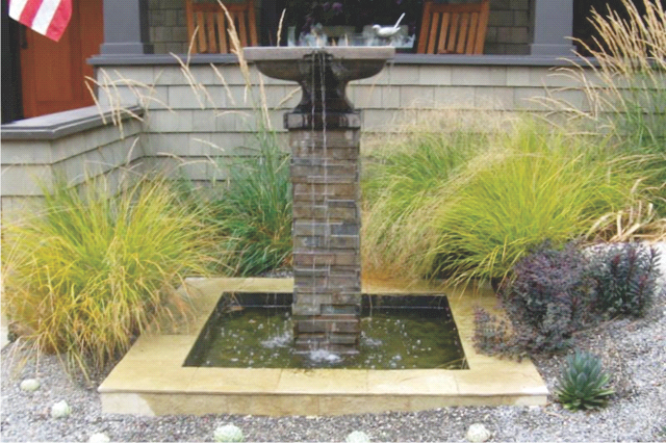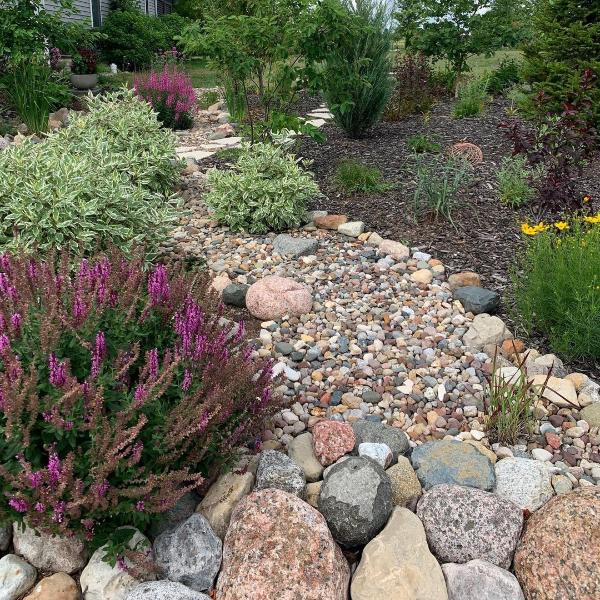Getting My Hilton Head Landscapes To Work
Getting My Hilton Head Landscapes To Work
Blog Article
Facts About Hilton Head Landscapes Revealed
Table of ContentsFascination About Hilton Head Landscapes8 Easy Facts About Hilton Head Landscapes DescribedOur Hilton Head Landscapes IdeasFacts About Hilton Head Landscapes UncoveredThe Best Guide To Hilton Head LandscapesAll about Hilton Head LandscapesHilton Head Landscapes Fundamentals ExplainedThe Ultimate Guide To Hilton Head Landscapes
Kind compatibility is additionally a significant part of unity in designone or 2 noticeably various forms are good for contrast and focus, but normally all various other forms must have some resemblances for a linked look. Structure refers to how crude or great the surface area of the plant or hardscape material really feels and/or looks.
Instances of plants with rugged texture include philodendrons, agaves, bromeliads, hollies, palms, and hydrangeas. Hardscape with crude appearance consists of rough-cut rock, rough-finished block, and unfinished wood with knots and an increased grain. Aged or old construction material that preserves a weather-beaten surface is often rugged in texture. Features that produce great texture include tiny foliage; thin, strappy fallen leaves (lawns) or high, thin stems; little, thick branches and little branches; long stems (vines); and little, fragile blossoms.
Hilton Head Landscapes - Truths
Most plants are average texture, in that they can not be referred to as having either crude or fine texture. They are defined by medium-sized fallen leaves with simple shapes and smooth edges. The average-sized branches are not largely spaced nor widely spaced, and the general type is normally rounded or mounding. Medium-textured plants serve as a history to web link and link the rugged- and fine-textured plants.

To make a room really feel smaller, put the crude textures along the outer boundary and the great structures closest to the visitor. The information of the crude texture makes the plants appear closer and makes the space feel smaller. The viewed structure of plants can likewise transform with the range from the plant.
8 Simple Techniques For Hilton Head Landscapes
Vibrant shades boost the contrast and make the structure appear coarser, while low-key shades can flatten texture. Hardscape with a crude texturesuch as extremely rough rocks and bold, huge timberstends to make all plant product appear more moderate distinctive. Designers often develop an appearance research (Number 8) theoretically to help choose the setup of plant products.
Figure 8. Appearance research study. Color in plant product and hardscape adds interest and range to the landscape. Color is one of the most conspicuous aspect in the landscape and is usually the focus of most house owners; however, it is additionally the most temporary aspect, usually lasting just a few weeks a year for private plants.
The Ultimate Guide To Hilton Head Landscapes
A simple description of the color wheel includes the three primaries of red, blue, and yellow; the 3 second colors (a mix of two primaries) of green, orange, and violet; and six tertiary colors (a mix of one nearby main and additional color), such as red-orange. Color theory describes the connection of shades per various other and just how they must be made use of in a make-up.

Comparable (in some cases called unified) shade systems are any kind of three to five colors that are adjacent on the color wheel, such as red, red-orange, orange, yellow-orange, and yellow, or blue, blue-violet, and violet (landscape design hilton head). The shades are associated per various other due to the fact that they generally include two primaries blended to create a secondary and 2 tertiary shades, which means they share usual residential or commercial properties
Complementary colors are often found normally in flowers; a common set is yellow and violet. Shade is located in the blossoms, vegetation, bark, and fruit of plants.
Not known Facts About Hilton Head Landscapes
Environment-friendly foliage in all its numerous tones is the leading color by amount, however various other shades catch focus a lot more conveniently due to their high contrast to the color environment-friendly. Color is likewise found in structures, rocks, pavers, wood, and furniture. Most shades in all-natural materials, such as rock and wood, are typically soft and tend to be variations of brownish, tan, and pale yellow.
Colors have homes that can influence feelings, spatial understanding, light high quality, equilibrium, and focus. Trendy shades often tend to be relaxing and should be made use of in locations for relaxation and peacefulness.
Fascination About Hilton Head Landscapes
The "temperature level" of shades can likewise impact the perception of range. Cool colors have a tendency to decline and are perceived as being farther away, making a space feel larger. Cozy shades have a tendency to development and are regarded as being more detailed, making a space feel smaller. Shade can additionally be utilized to record focus and direct sights.
For instance, bright yellow, which has the highest strength, likewise has a high contrast with all other colors (usually referred to as a "pop" of color) and ought to be made use of sparingly. A percentage of intense shade has as much visual weight as a huge amount of a much more controlled or weaker color.
Analogous (in some cases called unified) color design are any type of three to five colors that are surrounding on the color wheel, such as red, red-orange, orange, yellow-orange, and yellow, or blue, blue-violet, and violet. The colors are related per other because they normally consist of two primaries mixed to develop a secondary and two tertiary shades, which indicates they share typical homes.
6 Simple Techniques For Hilton Head Landscapes
Complementary shades are frequently found naturally in flowers; a typical Look At This pair is yellow and violet. Color is located in the blossoms, foliage, bark, and fruit of plants.
Environment-friendly foliage in all its different tones is the leading shade by quantity, but other shades catch attention quicker as a result of their high comparison to the shade eco-friendly - Landscapers near me - https://www.imdb.com/user/ur184305432/. Color is likewise found in buildings, rocks, pavers, wood, and furnishings. A lot of colors in natural materials, such as stone and wood, are typically low-key and have a tendency to be variants of brownish, tan, and light yellow
About Hilton Head Landscapes
Shade is a crucial aspect for developing passion and variety in the landscape. Colors have residential properties that can impact emotions, spatial assumption, light top quality, balance, and focus. One residential or commercial property of color is defined family member to temperaturecolors seem trendy or cozy and can affect emotions or feelings. Awesome colors often tend to be calming and need to be used in areas for leisure and tranquility.
The "temperature" of colors can additionally affect the assumption of distance. Cool colors have a tendency to decline and are regarded as being farther away, making an area feel bigger. Cozy colors tend to advance and are viewed as being closer, making an area really feel smaller sized. Shade can also be utilized to record interest and direct sights.
For instance, bright yellow, which has the highest intensity, also has a high contrast with all other colors (often defined as a "pop" of shade) and need to be conserved. A small amount of intense shade has as much aesthetic weight as a large amount of an extra controlled or weaker shade.
Report this page